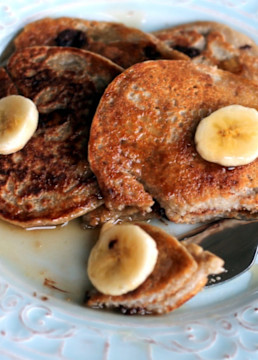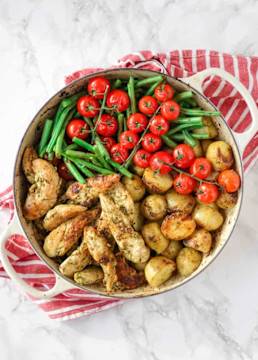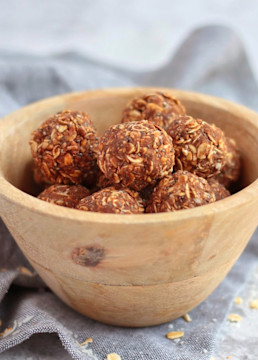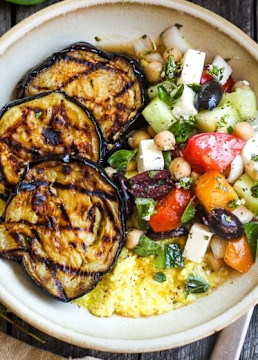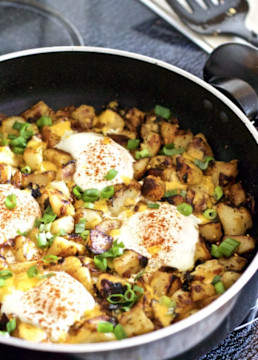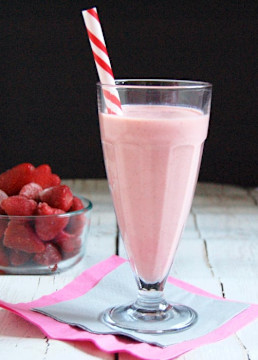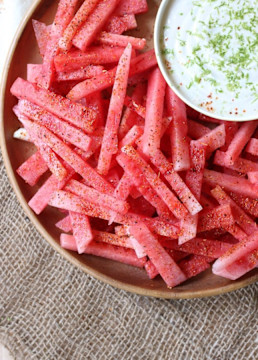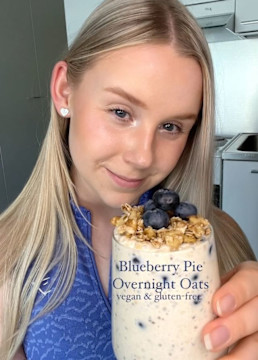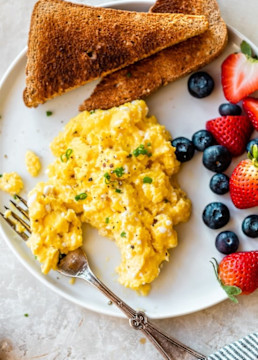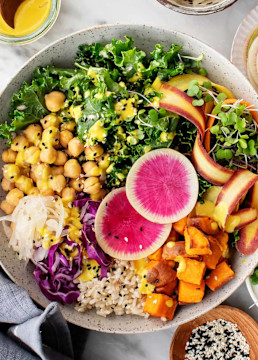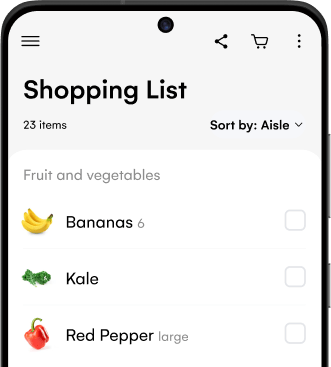Looking for a gluten-free diet plan for beginners? We know that a gluten-free diet may seem intimidating, but it doesn’t have to be! Whether you’re here because of a medical reason or a personal preference, we’ll help you to hit the ground running.
The future looks bright for those following a gluten-free diet. Awareness is growing all over the world. And in countries with a higher level of awareness, we’re seeing more gluten-free products in stores and increased regulatory measures. The best way to get started? Level up your knowledge – and save our meal plan below!
If you want to know more about this diet before checking out the actual meal plan, you can read more by jumping to the information section.
Our 7-Day Gluten-free Diet Meal Plan for Beginners
To complete a 1600-kcal recommendation:
For breakfast, pair your pancakes with high protein scrambled eggs with cottage cheese.
To complete a 1600-kcal recommendation:
Pair your breakfast hash with 2 slices of gluten-free bread. You can also choose to bake your own from this recipe
To complete a 1600-kcal recommendation:
For lunch, pair the swedish meatballs with roasted potatoes.
Day 4 starts with a blueberry pie overnight oats. You can prepare this meal the night before and make sure to not forget to make a second serving for Day 7 breakfast.
And similar to Day 1, your lunch meal is also a One Pan Pesto Chicken Bake Recipe.
If you need a guide for the repeating recipes throughout the week, you can check this table as reference.
To complete a 1600-kcal recommendation:
Pair your scrambled eggs with cottage cheese with 2 slices of gluten-free bread. You can also choose to bake your own from this recipe
Similar to Day 2 breakfast, pair your breakfast hash with 2 slices of gluten free bread. This would help you achieve a 1600-calorie intake for this day.
By Day 7, your breakfast, snacks and dinner have already been prepared from the days prior in this meal plan. You can save a lot of time by preparing them in advance. Just be sure to store the food properly and practice our food safety reminders found in this section.
If you need a guide for the repeating recipes throughout the week, you can check this table as reference.
Ingredient and Shopping Tips for the Gluten-free Diet Meal Plan
The 7-day meal plan we’ve created for the gluten-free diet is easy to follow – but some tips never harmed anyone! We’re all about saving time, money, and making your eating habits work for you. Here are a few things to consider when you’re shopping for your ingredients.
- Start meal planning your vegan meal plan and grocery list on Friday and Saturday. And do your shopping during the weekend.
- When buying your groceries, you can choose to buy one type of product for the wraps, and pasta.
- You can explore vegan meat alternatives too when planning your meals. This can help you save time, and add variety and flavor to your protein sources.
- Label your containers when preparing meals in advance and storing them in the fridge.
In this meal plan, there are similar recipes planned for other days to help you save time and budget your money.
As a quick overview, these are the repeating recipes that you will need to prepare two or three servings and store properly in a separately in containers.
| Recipes | Number of Servings to prepare | Day and Meal Planned |
| Oatmeal Chocolate Chip Banana Pancakes | 2 servings | Day 1 and 3 Breakfast |
| Blueberry Pie Overnight Oats | 2 servings | Day 4 and 7 Breakfast |
| Gluten-Free Breakfast Hash | 2 servings | Day 2 and 6 Breakfast |
| High Protein Scrambled Eggs with Cottage cheese | 2 servings | Day 1 and 5 Breakfast |
| One Pan Pesto Chicken Bake Recipe | 2 servings | Day 1 and 4 Lunch |
| Sausage, apple and potato one-pan roast | 2 servings | Day 2 and 5 Lunch |
| Vegan Chocolate Peanut Butter Energy Balls | 3 servings | Day 1, and 4 Snacks |
| Watermelon Sticks with Coconut Lime Dip | 2 servings | Day 3 and 5 Snacks |
| Strawberry Kefir Smoothie (optional, you can also prepare this on the same day) | 2 servings | Day 2 and 6 Snacks |
| Grilled Eggplant with Creamy Polenta and Greek Relish | 2 servings | Day 1 and 4 Dinner |
| Tuscan Herb Pork Tenderloin with White Beans | 3 servings | Day 2, 5 and 7 Dinner |
| 20-Minute Gluten-Free Taco Salad with Ground Beef | 2 servings | Day 3 and 6 Dinner |
- When you prepare meals in advance, portion them into individual serving sizes before storing. Transfer the them to an airtight container or a large resealable freezer bag. You can label the containers to avoid confusion.
- For gluten-free bread, you can choose to bake this and store them in an airtight container in preparation for the other meals planned. You also have the option to buy it from the grocery store and pair this with 2 slices of store-bought gluten-free bread.
- For the leftover ingredients, and snacks like the vegan energy balls and roast chestnuts, you can use them for your next week’s meal planning.
Some food safety reminders
Our gluten-free diet plan for beginners calls for some meals to be prepared in advance to save time. Here are some food safety tips to keep in mind when preparing meals in advance:
- Start with clean hands and surfaces.
- Use separate utensils, cutting boards, and cooking equipment for gluten-free and gluten-containing foods to avoid cross-contamination.
- Use fresh ingredients and check expiration dates.
- Keep raw and cooked foods separate.
- Cook foods thoroughly and cool them quickly.
- Store meals in airtight containers with labels and dates.
- Thaw safely in the refrigerator, under cold water, or in the microwave.
- Reheat to 165°F (74°C) before eating. Except for those that have different reheating requirements.
- Use or discard leftovers within a safe time frame.
- Trust your senses – if it smells off, looks odd, or has mold, discard it.
What is gluten?
Gluten is like a protein found in wheat, barley, rye, and some other grains. It’s made up of two main proteins: glutenin and gliadin. When flour is mixed with water, gluten forms a sticky, elastic consistency that gives dough its texture and helps it rise during baking.
What is a gluten-free diet?
A gluten-free diet is a dietary approach that involves eliminating gluten in your overall daily consumption.
Who should follow a gluten-free diet?
There are some medical conditions that causes the body to react badly to gluten. For example, when people with celiac disease eat gluten, it damages their intestines and makes it hard for them to get nutrients from food. This can cause stomach pain, tiredness, and other problems.
- People with celiac disease
- People with non-celiac gluten sensitivity (NCGS)
- People who are allergic to wheat
- People with Dermatitis Herpetiformis (DH)
Jump to the steps on how to follow a gluten-free diet for more information.
Steps on How to Follow a Gluten-free Diet
Step 1: Plan Ahead
Planning ahead and investing time in meal planning and prepping can make things easier for you especially if you’ve just begun following a gluten-free diet. You can research some recipes first, and list what you’d like to cook for the whole week. To give you an idea, you can join some of our Gluten-free communities and check out our 7-Day Gluten-free Diet Plan for Beginners above.
Step 2: Always read the label
Now that you’ve a plan, it’s time to start shopping. When shopping for groceries, make it a habit to carefully read food labels. Gluten can sneak into various foods and products, including sauces, condiments, processed meats, soups, and even cosmetics.
Tips to spot gluten in the label
Gluten can hide under various names in ingredient lists, making it essential to recognize its aliases. Some common ingredients to watch out for include:
- Wheat: This is the most well-known gluten-containing grain and can appear in different forms like wheat flour, wheat bran, wheat germ, and semolina.
- Barley: Look for ingredients such as barley malt, barley extract, and barley flour.
- Rye: Keep an eye out for rye flour, rye bread, and rye-based ingredients.
- Oats: While oats themselves are naturally gluten-free, they are often cross-contaminated during processing. Ensure that oats are labeled as gluten-free to avoid potential contamination.
Some hidden sources of gluten to be aware of include:
- Soy sauce: Traditional soy sauce contains wheat, so opt for gluten-free tamari or soy sauce alternatives.
- Salad dressings: Check labels for wheat-based thickeners or malt vinegar.
- Soups and broths: Some canned or packaged soups may contain gluten-containing thickeners or flavorings.
- Processed meats: Deli meats, sausages, and meatballs may contain breadcrumbs or fillers with gluten.
- Beer and malt beverages: These are typically brewed from barley, wheat, or rye and contain gluten.
Step 3: Explore Gluten-Free Alternatives
Once you’ve educated yourself on how to spot gluten in food products, you could explore gluten-free alternatives in the grocery store. Here are some examples:
Gluten-free pasta
There are a lot gluten-free pasta options available in the market! Some of them made from grains like rice, corn, quinoa, chickpeas, lentils, and even vegetables like zucchini or sweet potatoes. These alternatives offer similar texture and taste to traditional wheat-based pasta, allowing you to enjoy your favorite pasta dishes without compromising on flavor or satisfaction.
Gluten-free Bread and Baking Ingredients
Just like in the meal plan above, you’ve the choice to bake or purchase your bread. Here are a few things you must know about your gluten-free bread and pastries:
- Knowing about alternative flours to wheat flour is a must. Some of the examples are rice flour, almond flour, tapioca starch, sorghum flour, and potato starch.
- Incorporate binding agents like xanthan gum or guar gum can help improve texture and structure.
- You can also learn more by searching up gluten-free recipes and joining our gluten-free baking community.
Gluten-free Snacks
Snacking is a part of a healthy diet and fortunately, there are plenty of gluten-free snack options to satisfy your cravings. Here are some ideas:
- Fresh fruits and vegetables with hummus or nut butter.
- Rice cakes topped with avocado, tuna salad, or cheese.
- Popcorn (plain or lightly seasoned) as a crunchy and satisfying snack.
- Nuts and seeds (almonds, walnuts, pumpkin seeds) for a nutrient-rich boost.
You can read more about gluten-free snack ideas here.
FAQ on Gluten-free diet
Focus on consuming a variety of nutrient-dense foods such as fruits, vegetables, lean proteins, dairy or dairy alternatives, gluten-free grains, nuts, and seeds. You can consult a registered dietitian to help with planning your meals and address any nutritional concerns.
No. In fact, factors such as overall calorie intake, food choices, portion control, and physical activity levels are things that you should focus on when trying to lose weight. You can read more about following a healthy weight loss journey here.
Yes, it’s possible to eat out on a gluten-free diet. Choose restaurants with gluten-free options or accommodations, inform staff about your dietary needs, and ask questions about food preparation to ensure safe choices.
Plan meals together! Share this plan with your family

